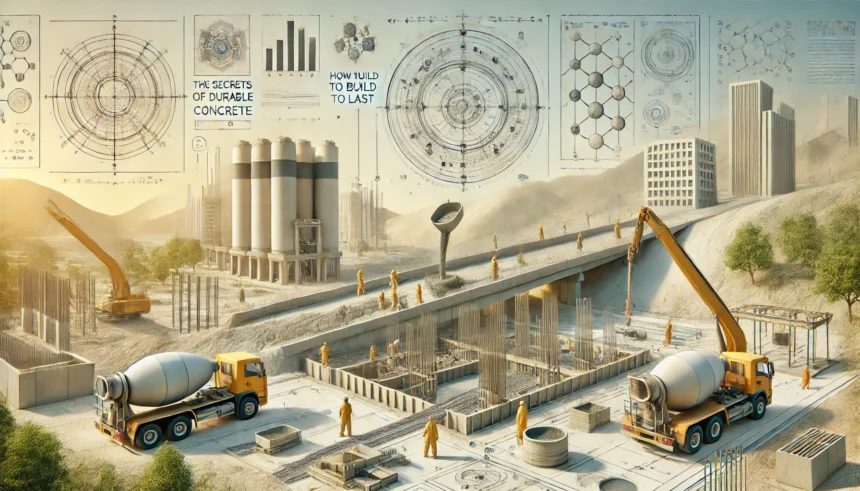Key Takeaways
- Concrete’s durability depends on its composition and the environment where it’s used.
- Adequate upkeep can significantly enhance the durability of concrete buildings.
- Innovations in concrete technology are paving the way for more sustainable construction.
Introduction to Concrete’s Durability
Concrete stands as a pillar in construction due to its unmatched strength and versatility. The material’s resilience is central to the integrity and longevity of countless structures, including the sky-touching skyscrapers of bustling urban landscapes and the sprawling bridges that connect communities. Choosing experienced commercial concrete contractors is essential to harness this robust material’s true potential. But why is concrete so enduring, and how can its durability be further enhanced? The answers often lie in the subtleties of its composition and the attention to environmental factors that might impact its performance. By delving deeper into these elements and embracing cutting-edge technologies, one can build structures that are formidable in their lifetime and resilient against nature’s forces.
Understanding Concrete Composition
The core of concrete’s robustness is found in its carefully balanced composition—a cement, aggregates, and water blend. However, the nuances of each ingredient’s quantity and quality can drastically affect the result. For instance, the choice of aggregates can dictate the mix’s strength, workability, and durability. Industry leaders are pioneering advancements in mixed designs to enhance resilience and push the boundaries of sustainability. Contemporary blends are designed to meet particular construction needs, guaranteeing suitability for different situations. Such precision in the formulation is key to maintaining concrete’s durability in the face of diverse challenges.
Environmental Factors Affecting Concrete
While composition is crucial, environmental conditions are equally significant in determining the lifespan of concrete structures. Climatic variations can impose diverse stress conditions—saline environments, for example, introduce chloride ions that can potentially compromise the structural integrity of concrete. At the same time, regions prone to freeze-thaw cycles may face cracking issues. A recent study has highlighted these geographical and climatic challenges, underscoring the importance of customizing concrete solutions to withstand unique environmental demands. It entails designing specific mixes and employing protective measures suited to each location’s challenges, thus preventing untimely degradation.
Customizing Solutions for Various Climates
Understanding the environmental context is vital. For instance, incorporating certain admixtures that enhance air entrainment can effectively mitigate problems associated with freeze-thaw cycles. Similarly, selecting aggregates resistant to chemical attack can prevent deterioration in saline coastal regions, thereby ensuring the longevity of such constructions.
Innovations in Concrete Technology
Concrete technology is evolving rapidly with innovations designed to bolster durability and functionality. Self-healing concrete, which can autonomously repair cracks via embedded chemicals or bacteria, represents a notable advancement, reducing long-term maintenance needs and costs.
Additionally, fiber-reinforced concrete, incorporating synthetic or natural fibers, offers improved tensile strength and crack resistance. These cutting-edge solutions exemplify how technological integration can transform our approach to construction, leading to more durable and cost-effective structures over their lifetime.
Maintenance Practices for Concrete Structures
Even with the most resilient materials, vigilant maintenance practices are essential to extend the life of concrete structures. Regular inspections facilitate early detection of potential issues, allowing timely interventions to avert more significant problems. Sealing surface cracks and applying protective coatings are fundamental maintenance practices that help defend against moisture ingress and chemical exposure.
Such proactive measures preserve concrete’s structural integrity and drastically reduce the frequency and cost of repairs, reinforcing the built environment’s sustainability over the long term.
Sustainability and Concrete
Sustainability is progressively emerging as a central concern in construction, with the concrete sector leading these transformative initiatives. The industry is making strides towards eco-friendly construction practices by integrating recycled materials into concrete production and optimizing processes to reduce carbon emissions. These sustainable practices foster environmental and structural benefits, aligning durability with the broader goals of reducing ecological impact and enhancing concrete’s lifecycle performance.
Case Studies: Durable Concrete Implementations
Examining real-world applications offers invaluable insights into the effectiveness of durable concrete strategies. Projects that have endured the test of time provide lessons in leveraging the right materials and technologies in the face of environmental challenges.
From infrastructure marvels in metropolis heartlands to the humble yet enduring rural bridges, these case studies exhibit how an intimate understanding of material science and the regional environment creates structures that are not just built but built to last.
Conclusion on Building Long-Lasting Structures
Creating durable structures is a nuanced endeavor that combines expertise in material formulations, environmental analysis, and cutting-edge technological advancements. By adhering to these principles, experts ensure that the built environment is safe and functional and poised to serve generations to come, anchored by concrete that truly withstands the test of time.






